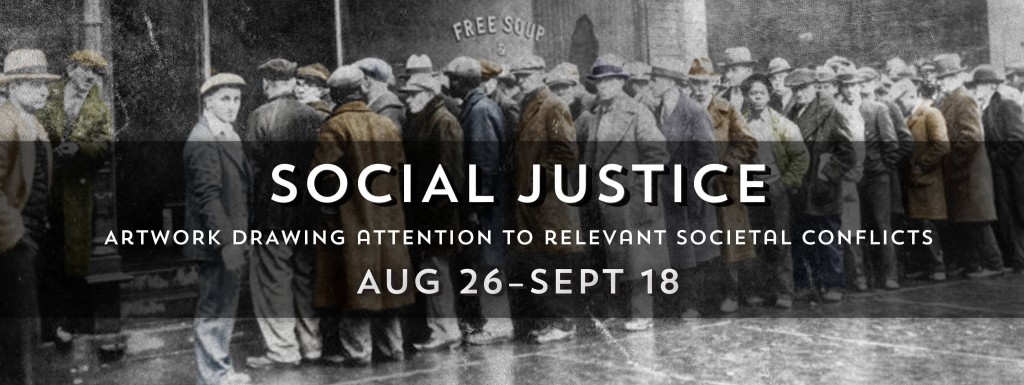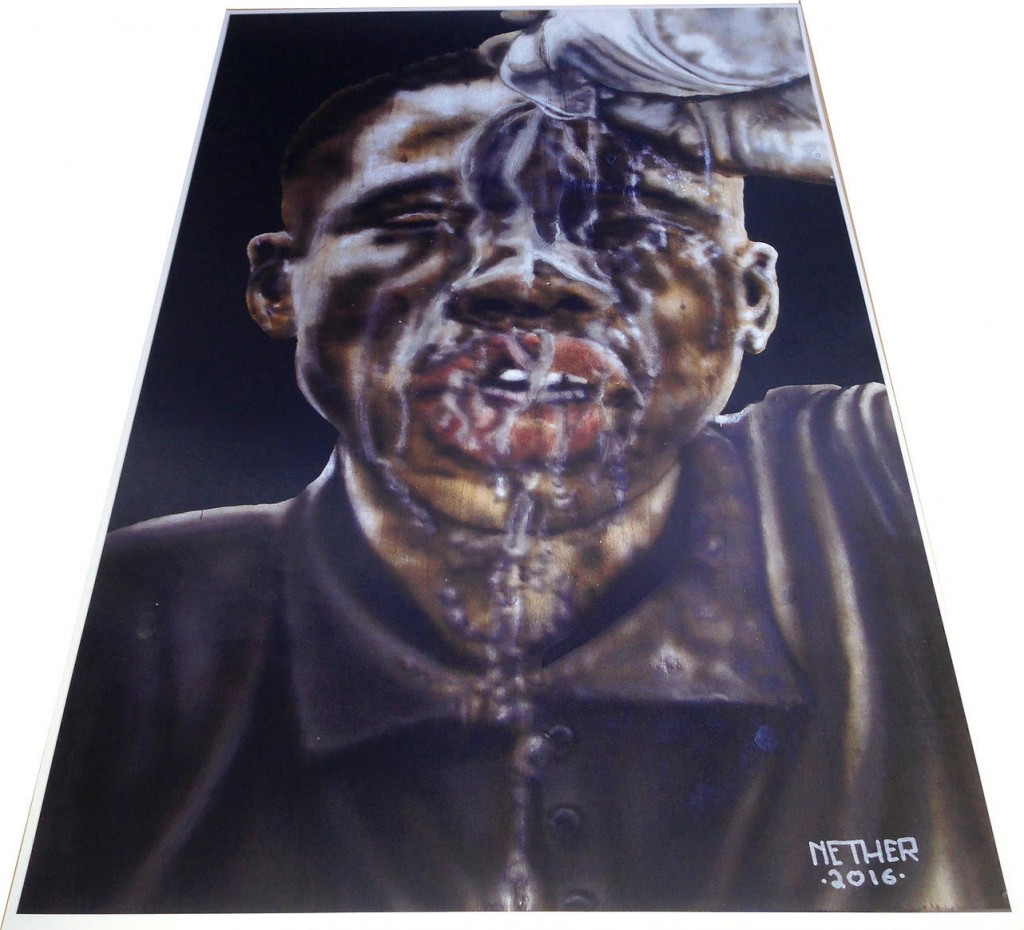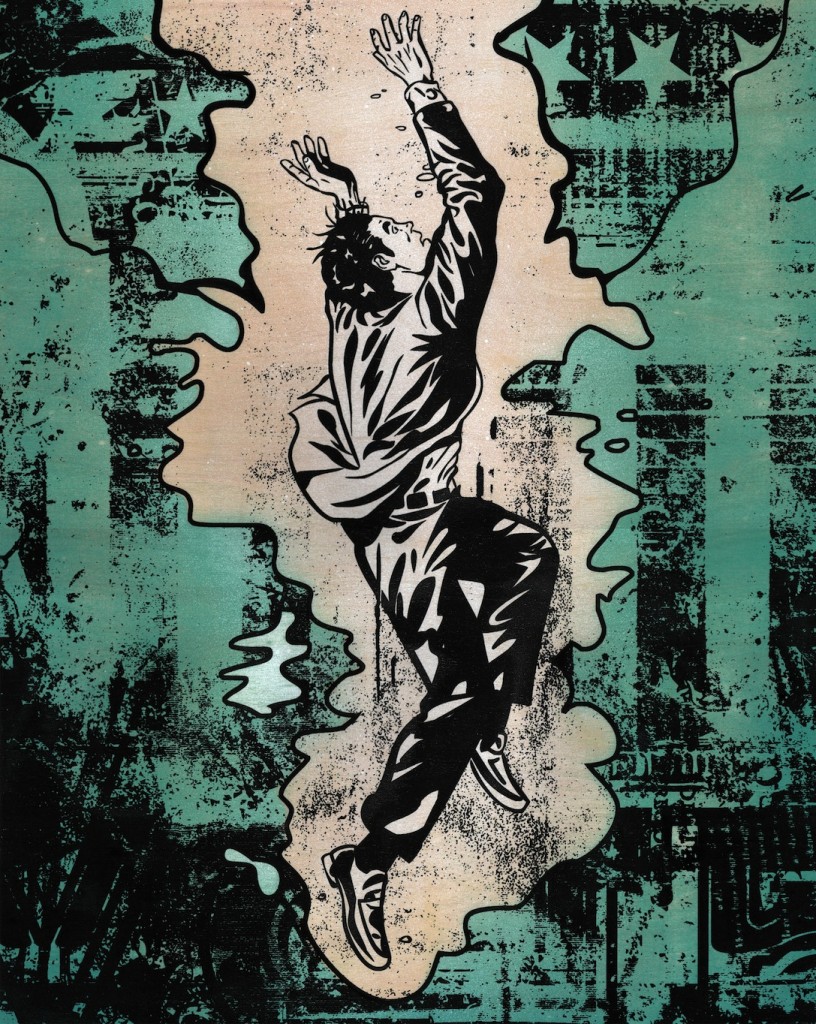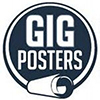This might just be the most controversial show that Galerie F has ever put on. The day that we announced the official line-up we were confronted by concerned artist activists from the Chicago area who are unhappy with the large scope of the show, the predominately male line-up, a perceived contribution that the gallery makes to gentrification in Logan Square, and many other issues. We have begun conversations with those raising concerns and are excited for the gallery space to become a space where we can all come together to discuss these topics that affect us all. This show is about understanding, about introducing our audience to artist voices and causes they might not have known about, and allowing meaningful work to resonate in the gallery.
These conversations have been difficult but ultimately productive and we hope that they will continue during the actual exhibition and long after. Due to this experience we decided to change the title of the exhibition to “LET’S TALK ABOUT IT.” We feel that this title better represents who we are as a gallery and our intentions with the show. This title also reflects our willingness to engage and talk with our neighbors. We want to productively support our artistic community and to provide a space where artists’ voices can be heard. The gallery is not attempting to spearhead or make a comment on any one particular movement. We hope to inspire conversation about the overwhelming amount of social issues currently relevant in our society and around the world.
Sometimes it’s the specific cause that inspires a street artist to make art connected to social issues, and sometimes it’s the place. For Nether, Baltimore is the city that drives his art-making: “I love Baltimore, my hometown, and working in Baltimore because of the incredible cultural fabric of the city. It’s a city that is beloved by its residents yet needs a lot of work. I have seen it as my lifetime goal to help the city through public art and creating dialogue about disdained urban issues. Although I love discovering other cities through artwork, I see Baltimore as my home base.”
Nether has become well known in Baltimore for his large scale murals, but originally it was smaller-scale and even more ephemeral pieces that brought him to the scene. It was in 2010 that he became inspired by TEFCON and GAIA’s wheatpastes. “I saw wheatpaste as a rouge beautification form that allowed my work to breathe past the gallery context.”
In terms of social activism, Nether is hesitant to define himself as an artist activist due to the tendency to set certain expectations for artwork defined as activist. “I generally see myself as a social and cultural documentarian. That being said, street art as a more tactical form of civil disobedience is something that has always entranced me. What drew me to public art was its ability to create conversations about urban issues as much as the art.”
Amberella, the first female street artist to join the line-up, uses her personal experiences as a woman to inform her work. The artist began her ongoing series entitled “Cat Call” in 2011 when she was inspired to create works that, as she describes, “are made to be just as public and uncomfortable as actual cat calling.” The female figure used for her wheat pastes is a screen print from when she was getting her BFA at the University of the Arts in Philadelphia where she is also based. At the same time that she rediscovered the screen print, she also found past cat calls that she had written down in her diaries and sketchbooks. “Damn Girl, You Thick” and “Yo Girl You Married? I Don’t Mind” are direct results of this discovery.
When asked about her stance on women participating in the male-dominated world of “street art” and graffiti, Amberella replied that she “feels honored and proud to be placing work into the streets that is a reality for me as a woman…I’m sharing things that are vulnerable on top of being viewed as a vulnerable woman. As a woman we are viewed as more emotionally driven than men which also works towards the mission of any and all of my work.” This can be seen in the artist’s more pop-art driven works that utilize the shape of candy hearts that are typically shared on Valentine’s Day with phrases such as “4Ever” but also “I Believe in You,” “Wake Up,” and “Try Harder.” When asked about her personal experience of breaking into street art she writes, “I think it’s incredibly hard for a woman to break into any male dominated field without having triple the judgments and expectations. You are scrutinized, compared, and judged, and that’s part of it.”
In addition to the sometimes uncomfortable and blatant messaging in most of her street art work, the artist also attests to a tension that happens during her design process as well as when the artwork is finished and belongs to the public. “I feel that the work is really strong when it can speak to opposing viewpoints. That means it can speak to most people, and affecting people that have opposite opinions with the same piece of work feels like a success to me.” This also means that her work sometimes results in opposing or unexpected emotions within a single individual: “If women get a laugh [from these works], great… to sometimes realize how ridiculous the things men say to us is OKAY. I think that obnoxious lady out on the street with a post up of what we hear feels empowering. She is out there plastering the walls looking over us.”
When it comes to critically examining social issues, sometimes the best place to start is with your own cultural experience. Biafra, an artist living and working in Minneapolis, Minnesota, and from northeast Wisconsin, uses comic book-like characters as a way of critiquing “white culture.” When asked to elaborate on this, the artist told the gallery that, “seeing those characters takes you back to another generation and the goal of my art is to take a critical look at the people that put us where we are now.” The characters began as a series of prints that the artist created to investigate problems that “were falling on the shoulders of my generation, like oil, space, etc. Things that were, in a way, wastefully considered in previous generations that are now big concerns that my generation and future generations will inevitably have to solve. All of it feels a little overwhelming.”
Biafra’s work can be seen in places all over the world, and for him, this is an important aspect of being a street artist. We asked the artist what it is about street art and drives him to travel. “Of course I love watching how people interact with art that is free on the street, but I think what really winds up driving it is the romantic notion that if my friends or family were somewhere new there would already be a little piece of me there even if I couldn’t physically be there. It’s happened with stickers and trains. When you get that picture the feeling is magical.”
For the past two years Biafra has travelled to the Cheyenne River Reservation in South Dakota for the annual Red Can Graffiti Jam. There he teaches stenciling as part of Daesk’s “Sprayfinger” graffiti classes. Julie Garreau (Cheyenne River Youth Project) was behind the creation of an art park on the reservation where youth are encouraged to express themselves through graffiti. During the week-long Graffiti Jam Biafra collaborated with street artists and youth in the park and around the city. “we painted in the park and around the community, adding color and Lakota themed murals all over the city of Eagle Butte…The line up of artists was also spectacular (Scribe, Serval, East, Daesk, Wundr, Cyfi, Kazilla, ER and me). Every time I go out there I love it, but this time was particularly special and I will remember it forever.”
“LET’S TALK ABOUT IT” is an important show for Galerie F. Not only does it point to the gallery’s tremendous growth as a community space over the past four years, but the exhibition is also sparking important conversations about how we intend for the gallery to continue to grow in tandem with our neighbors in Logan Square and Chicago more widely. If you are in the neighborhood, please stop by this Friday, August 26th 6-10 p.m. for the exhibition opening and artist reception. We look forward to continuing the conversation throughout the show and after it closes on September 18th.
OFFICIAL LINE-UP:
Amberella
Anthony Lewellen
Beoptimisticchi
Biafra
Carlos Barberena
CERA
CHema Skandal!
Colin Matthes
Danny Sobor
Deuce Seven
Don’t Fret
Eric Garcia
Fleurs De Geurre
Guache
ICY and SOT
Ivan Vazquez
Jacob Thomas
Jeff Zimmerman
JH Jones
Kelly Schmader
Morgan
NACO
Nether
Pablo Machioli
Pete Railand
Scout
Sentrock
















